This article will explore a comprehensive front-end developer roadmap that guides you through the essential skills, technologies, and best practices to navigate your journey successfully. The dynamic field of front-end development calls for a broad skill set and a firm grasp of the newest technology. A common problem for aspiring developers is the enormous number of available tools, frameworks, and methodologies.
Defining the Role of a Frontend Developer
Frontend developers are the creative architects of the digital world, entrusted with the dynamic task of transforming static design concepts into vibrant and interactive user interfaces. Working diligently on the client side, they not only prioritize the visual allure of a website but also intricately weave functionality and user friendliness into the fabric of the user interface. Their expertise lies in crafting an online experience that seamlessly marries aesthetics with functionality, ensuring websites not only capture attention but also deliver an intuitive and engaging journey for users.
Importance of a Well-Defined Roadmap
Going on a mission without a map is like swimming across waters that are unfamiliar. A clear plan is essential for front-end developers—it is not a luxury. It acts as a compass, helping beginners and experts alike navigate the complex world of front-end development.
Setting Goals
A roadmap acts as a compass, helping front-end developers set achievable goals. Whether you’re a beginner aiming to grasp the fundamentals or an experienced developer aspiring to master advanced concepts, a roadmap provides a clear trajectory.
Tracking Progress
In the dynamic world of web development, progress is measured in acquired skills, implemented projects, and adaptation to emerging technologies. A roadmap allows developers to track their journey, celebrating milestones and identifying areas for improvement.
Staying Updated
The tech landscape evolves rapidly, introducing new tools, frameworks, and best practices. A well-defined roadmap ensures that developers stay abreast of industry trends, preventing stagnation and fostering continuous growth.
Industry Trends
Understanding the current pulse of frontend development is vital. Whether it’s the rise of a new JavaScript framework, the emergence of progressive web apps (PWAs), or the evolution of responsive design principles, a roadmap keeps developers informed.
Nurturing Talent: The Front-End Developer Roadmap

The journey of a frontend developer is multifaceted, involving the acquisition of essential skills, mastery of core technologies, and the cultivation of soft skills. Let’s delve into the layers of this journey, exploring key aspects that define a successful frontend developer.
Essential Skills
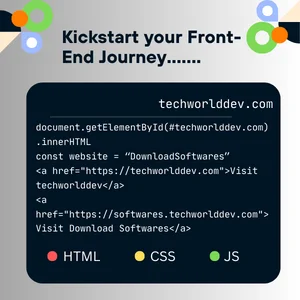
1. HTML, CSS, and JavaScript
The combined power of HTML, CSS, and JavaScript forms the basis of front-end development. These languages are the foundation for web developers to construct a website’s interactive, stylistic, and structural components.
2. Responsive Design Principles
Responsive design is essential in a world where a wide variety of devices dominate the digital space. In order to provide the best possible user experience, frontend developers need to understand the fundamentals of designing layouts that fluidly adjust to different screen sizes.
3. Version Control with Git
Collaboration is inherent in web development, and Git is the collaborative tool of choice. Proficiency in version control with Git empowers developers to work seamlessly in teams, track changes, and manage projects efficiently.
Core Technologies

1. JavaScript Frameworks (React, Angular, Vue)
Frontend frameworks elevate development efficiency by providing ready-made structures. Whether it’s the declarative approach of React, the comprehensive ecosystem of Angular, or the simplicity of Vue, choosing the right framework is pivotal.
2. CSS Preprocessors (Sass, Less)
CSS preprocessors enhance the capabilities of standard CSS by introducing variables and functions. Frontend developers often turn to Sass or Less to streamline stylesheet development.
3. Task Runners (Webpack, Gulp)
Automation is the heartbeat of front-end development. Task runners like Webpack and Gulp automate repetitive tasks, such as bundling, minification, and image optimization, freeing up developers to focus on creativity.
4. Browser Developer Tools
Mastering Browser Debugging Flawless code execution is an aspiration; debugging is a reality. Frontend developers must master the art of using browser developer tools to identify, diagnose, and rectify issues efficiently.
5. Optimizing Website Performance
User experience is closely tied to website performance. Frontend developers must optimize assets, implement lazy loading, and employ strategies like code splitting to enhance the speed and responsiveness of websites.
Frameworks of Front End Development
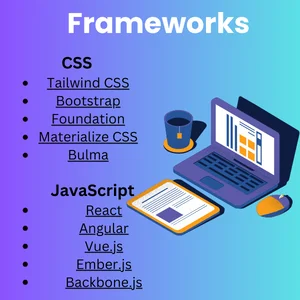
1. Frameworks for CSS
2. Frameworks for JavaScript
3. Foundation for Responsive Websites
Foundation is another contender in the realm of responsive frameworks. Frontend developers should explore its features and functionalities, enabling them to make informed choices based on project requirements.
Building and Automation Tools
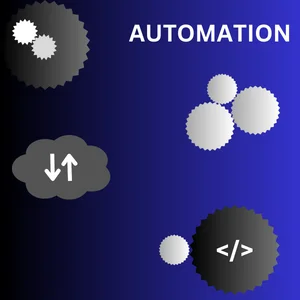
1. Grunt and npm Scripts
Automation tools like Grunt and npm scripts bring efficiency to frontend workflows. They automate tasks, allowing developers to focus on writing code rather than executing repetitive processes.
2. Continuous Integration with Jenkins
In collaborative environments, continuous integration is a linchpin. Jenkins automates the integration of code changes, facilitating seamless collaboration and ensuring a robust development pipeline.
Web Performance Optimization
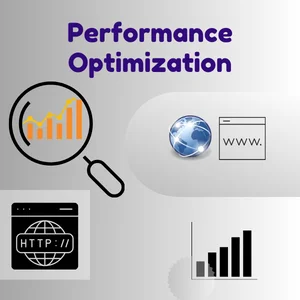
1. Minification and Compression
Optimizing website performance involves minimizing file sizes through techniques like minification and compression. Frontend developers should implement these strategies to ensure fast load times.
2. Lazy Loading Techniques
Lazy loading delays the loading of non-essential content until it’s required, contributing to faster initial page loads. Frontend developers should implement lazy loading for images and other resources judiciously.
Responsive Design
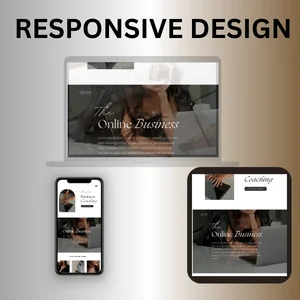
1. Mobile-First Development
In an era dominated by mobile devices, adopting a mobile-first approach is imperative. Frontend developers should prioritize designing for smaller screens first, ensuring a smooth and accessible experience.
2. Media Queries
Media queries empower developers to apply styles based on device characteristics. Mastering the art of media queries is crucial for creating responsive designs that adapt to various screen sizes.
3. Cross-Browser Compatibility
Compatibility across browsers is a must. If frontend developers want to guarantee a dependable and consistent user experience, they should thoroughly test their websites across a range of browsers.
4. Polyfills and Feature Detection
Polyfills fill in the gaps in browser support for certain features. Combining them with feature detection ensures that websites function uniformly across different browsers.
Accessibility
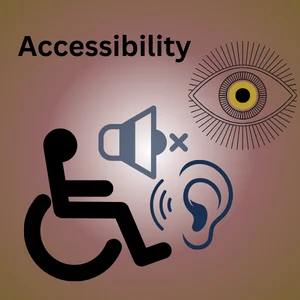
1. Creating Inclusive User Experiences
Accessibility is a cornerstone of frontend development. Frontend developers should design with inclusivity in mind, ensuring that websites are usable by individuals with disabilities.
2. Compliance with WCAG Standards
It is critical to follow the Web Content Accessibility Guidelines (WCAG). Adherence to these guidelines guarantees that websites are reachable by a wide range of users.
Progressive Web Apps (PWAs)
1. Enhancing the user experience
PWAs offer a seamless and app-like experience within a web browser. Frontend developers should explore the features that make PWAs an innovative addition to modern web development.
2. Implementing Offline Capabilities
PWAs can function offline, providing users with a consistent experience regardless of internet connectivity. Frontend developers should implement service workers and caching strategies to enable offline capabilities.
Deployment and Hosting

1. Choosing the Right Hosting Service
Selecting a hosting service is a pivotal decision. Factors such as server locations, scalability, and customer support should influence the choice of a hosting provider.
2. Continuous Deployment with CI/CD
Continuous deployment streamlines the release of code changes. Frontend developers should implement Continuous Integration/Continuous Deployment (CI/CD) pipelines to automate the deployment process.
Version Control
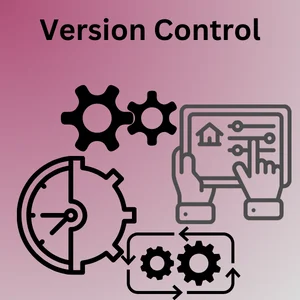
1. Collaborative Work with Git
Git facilitates collaborative development by enabling multiple developers to work on the same project. Understanding branching, merging, and best practices is essential for effective version control.
2. Branching and Merging Strategies
Frontend developers should master branching and merging strategies in Git. These strategies are instrumental in managing code changes within a collaborative environment.
Soft Skills

1. Effective Communication
Clear communication is the backbone of collaborative projects. Frontend developers should articulate ideas, ask questions, and provide constructive feedback effectively.
2. Problem-Solving Skills
In the dynamic field of front-end development, problem-solving skills are paramount. Frontend developers should be adept at overcoming challenges and finding efficient solutions.
Staying Updated

1. Following Industry Blogs and Forums
Staying informed about industry trends is a continuous process. Frontend developers should regularly read blogs, participate in forums, and engage with the community to share insights.
2. Attending Conferences and Meetups
Conferences and meetups offer valuable opportunities for networking and learning from industry leaders. Frontend developers should actively seek out these events to stay updated with the latest technologies.
Front End Developer Roadmap: Conclusion
In conclusion, the journey of a frontend developer is a dynamic expedition marked by growth, challenges, and innovation. A well-defined roadmap serves as a compass, guiding developers through the intricate terrain of frontend development. By acquiring essential skills, mastering core technologies, and nurturing soft skills, developers can embark on a successful career crafting captivating and user-friendly websites. This journey, much like the modular upgrades discussed in our post on “How modular upgrades enhance laptop longevity,” is a testament to the ever-evolving landscape of technology and the continuous pursuit of excellence.
FAQs
Q: How much time would it take to become a front-end developer with proficiency?
A: The timeline varies, but dedicated learning and practical experience can typically take several months to a year.
The Three-Month Roadmap for Beginner Frontend Developers
Month 1: Introduction to Web Development and HTML/CSS Basics
Weeks 1–2: Introduction to Web Development
- Gain insights into how the web functions.
- Overview of frontend development
Weeks 3-4: HTML and CSS Fundamentals
- Learn HTML tags and document structure.
- Style web pages with CSS.
- Create a simple static webpage.
Month 2: JavaScript Fundamentals and Basic Project
Weeks 5–6: JavaScript Basics
- Grasp JavaScript syntax and basic programming concepts.
- Manipulate the DOM.
Weeks 7-8: Responsive Web Design Basics
- Understand the principles of responsive design.
- Implement media queries for different devices.
Month 3: Git, Advanced JavaScript, and Framework Introduction
Week 9: Mini Project
- Build a basic interactive webpage using HTML, CSS, and JavaScript.
- Apply responsive design principles.
Week 10: Git Basics
- Set up a Git repository.
- Learn basic version control and collaboration.
Week 11: JavaScript Intermediate Concepts
- Work with functions, arrays, and objects.
- Understand asynchronous JavaScript (callbacks and promises).
Week 12: Introduction to Frontend Frameworks (e.g., React)
- Comprehend the basics of a frontend framework.
- Build simple components with React.
Month 4: Practice and Projects
Week 13: Final Project
- Develop a small project using React.
- Implement version control with Git.
Q: What does it mean to create for mobile first?
A: Designing for mobile devices is given priority in mobile-first development, which guarantees a superior user experience, especially in the age of smartphones.
Q: Why is accessibility crucial in web development?
A: Accessibility ensures that websites are usable by individuals with disabilities, promoting inclusive design principles.
Q: What are the benefits of using PWAs?
A: PWAs offer faster load times, offline capabilities, and a seamless app-like experience within a web browser.
Q: How often should a frontend developer update their skills?
A: Regular updates are essential in the fast-evolving world of frontend development.
